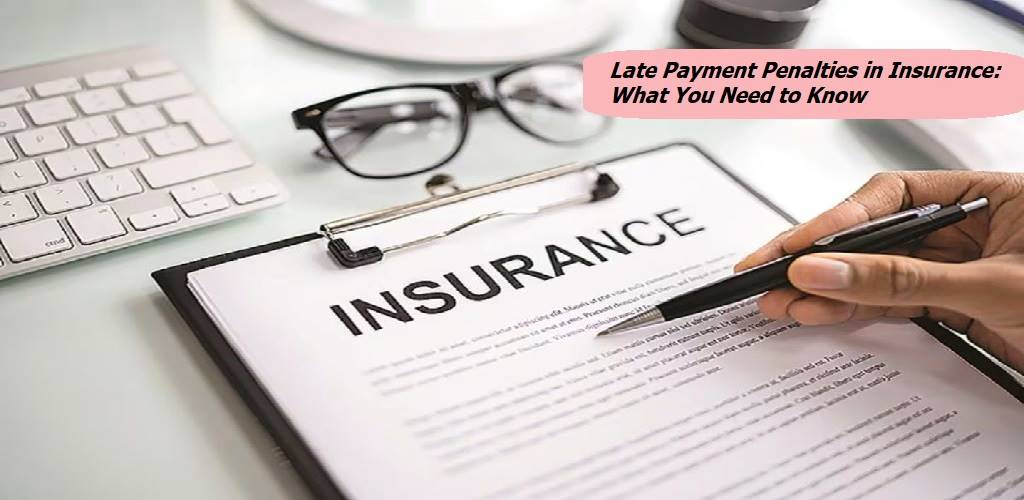One should purchase life insurance as it shields their spouse and children from the potentially catastrophic financial losses that could arise in the event of their passing. It offers financial stability, aids in debt repayment, assists in covering living expenditures, and aids in covering any last or medical costs.
However, when it comes to life insurance, the majority of Indians opt for LIC coverage. The LIC has regularly been the largest player in the insurance industry for the past 20 years. We will discuss the two important life insurance plans from the corporation, the LIC Dhan Sanchay plan and the LIC Dhan Vriddhi plan, along with their key distinctions and similarities.
What Is LIC Dhan Sanchay Plan?
LIC Dhan Sanchay plan is a non-linked, non-participating individual savings life insurance plan that combines protection with savings. This plan provides financial assistance to the family in the tragic event that the life assured dies during the term of the policy. It also provides a guaranteed income stream beginning on the maturity date and continuing for the duration of the payment period. The plan comes with 4 options: Option A, Option B, Option C, and Option D.
What Is LIC Dhan Vriddhi Plan?
LIC Dhan Vriddhi plan is a non-participating, non-linked, and individual plan that also combines protection with saving. The plan was recently introduced on June 23, 2023, and sales will continue through September 30, 2023.
The plan’s main goal is to provide the family with financial support in the event that the life assured passes away while the policy is in effect. Additionally, it provides a guaranteed lump sum payment at maturity to the living life assured. There is no requirement to pay further premiums because it is a single-premium life insurance plan. The two available options for the plan are Option 1 and Option 2.
Eligibility Criteria Of LIC Dhan Sanchay Plan & LIC Dhan Vriddhi Plan
| Parameters | LIC Dhan Sanchay | LIC Dhan Vriddhi |
| Minimum Entry Age | 3 Years (Completed) | 90 Days To 8 Years
Except for the minimum age at entry, as indicated in the maximum entry age below, the age at entry for the life assured is to be taken as the age closer to the birthday. |
| Maximum Entry Age | Options A & B: 50 Years (Nearest Birthday)
Option C: 65 Years (Nearest Birthday)
Option D: 40 Years (Nearest Birthday) | Option 1: 60 Years
Option 2: 40 Years (For PT 10 Years); 35 Years (For PT 15 Years); 32 Years (For PT 18 Years) |
| Policy Term | Options A & B: 10 & 15 Years
Options C & D: 5, 10, & 15 Years | 10, 15, & 18 Years |
Comparing Features & Benefits Of LIC Dhan Sanchay Plan & LIC Dhan Vriddhi Plan
Both plans provide their policyholders with a solid balance of savings and security. In order to help you pick wisely, this section will outline the similarities and differences between the two plans.
Death Benefit:
The policyholder will receive a lump sum death benefit under both plans. The ‘Sum Assured on Death’ or death benefit for both plans are as follows:
- Dhan Sanchay Plan: The “Sum Assured on Death” for Options A and B will be higher of 11 times the “Annualized Premium,” or “Sum Assured on Maturity,” or 105% of all premiums paid up until the date of death. The “Sum Assured on Death” for option C will be 1.25 times greater than the “Single Premium” or the “Sum Assured on Maturity.” The “Sum Assured on Death” for choice D will be 11 times the “Single Premium.”
- Dhan Vriddhi Plan: The death benefit for the basic sum assured under the first choice may not exceed 1.25 times the “tabular” premium. The second option enables a death reward equal to 10 times the selected basic sum insured’s tabular premium.
Maturity Benefit:
Under the LIC Dhan Sanchay plan, the “Sum Assured at Maturity” is calculated by multiplying the “Annualised Premium” or “Single-Premium” by the “Maturity Benefit Multiplier”. Following the policy’s maturity, “Guaranteed Income Benefit” and “Guaranteed Terminal Benefit” will be paid as maturity benefits. Whereas, the ‘Basic Sum Assured’ and ‘Accrued Guaranteed Additions’ will be paid if the life assured survives the specified maturity date.
Guaranteed Additions:
This benefit is available with the LIC Dhan Vriddhi plan. The ‘Guaranteed Additions’ will accumulate after each policy year for the duration of the policy. The ‘Guaranteed Additions’ will depend on the ‘Basic Sum Assured,’ ‘Policy Term,’ and ‘Option Selected. The following list includes the GA rates:
| Guaranteed Additions (Per Rs. 1000 Basic Sum Assured) | ||||||
| Basic Sum Assured | Option 1 | Option 2 | ||||
| Policy Term (PT) Of 10 Years | PT: 15 Years | PT: 18 Years | PT: 10 Years | PT: 15 Years | PT: 18 Years | |
| Rs. 1,25,000 To Rs. 2,45,000 | 60 | 65 | 65 | 25 | 30 | 30 |
| Rs. 2,50,000 To Rs. 6,95,000 | 65 | 70 | 70 | 30 | 35 | 35 |
| Rs. 7,00,000 & Above | 70 | 75 | 75 | 35 | 40 | 40 |
Rider Benefits:
Both plans come with the following optional riders:
LIC Dhan Sanchay Plan
Options C & D
- LIC’s Accidental Death and Disability Benefit Rider
- LIC’s New Term Assurance Rider
Options A & B
- LIC’s Accidental Death and Disability Benefit Rider
- LIC’s Accident Benefit Rider
- LIC’s New Term Assurance Rider
- LIC’s New Critical Illness Benefit Rider
- LIC’s Premium Waiver Benefit Rider
LIC Dhan Vriddhi Plan
- LIC’s Accidental Death and Disability Benefit Rider
- LIC’s New Term Assurance Rider
Payment Of Premiums:
Under the LIC Dhan Sanchay plan, regular premium payments can be made through salary deductions, payments every year, half-year, quarter, or month (only for monthly premiums through NACH). Whereas, under the LIC Dhan Vriddhi plan, only a single (lumpsum) payment method may be used to pay premiums.
Benefit Illustration Of LIC Dhan Sanchay Plan & LIC Dhan Vriddhi Plan
It is crucial to look at the benefit illustrations of both plans in order to comprehend how return on investment will be determined or invested. It will provide a thorough understanding of the premium investment strategy and investment growth.
LIC Dhan Sanchay Plan:
Let’s say, Mrs. Rashmi Kumari, a 29-year-old woman, bought the policy with a 5-year policy term. She will benefit from the plan in the following way!
| Policy Term | Sum Assured On Maturity | Sum Assured On Death | Annualized Premium Amount |
| 1st Year | 0 | Rs. 2,50,000 | Rs. 2,09,000 |
| 2nd Year | 0 | Rs. 2,50,000 | Rs. 2,09,000 |
| 3rd Year | 0 | Rs. 2,50,000 | Rs. 2,09,000 |
| 4th Year | 0 | Rs. 2,50,000 | Rs. 2,09,000 |
| 5th Year | Rs. 2,49,020 | Rs. 2,50,000 | Rs. 2,09,000 |
LIC Dhan Vriddhi Plan:
Suppose Mr. X, a 30-year-old male, has purchased the plan with the following details:
- Policy Term: 15 Years
- Option Chosen: Option 2
- Basic Sum Assured: Rs. 10,00,000
- Sum Assured On Death: Rs. 77,07,500
Now let’s take a look at the benefit summary of the plan!
| Policy Year (End Of Year) | Single Premium | Accrued Guaranteed Additions | Guaranteed Benefits | ||
| Maturity Benefit | Death Benefit | Minimum Guaranteed Surrender Benefit | |||
| 1 | 7,70,750 | 40,000 | – | 77,47,500 | 5,84,975 |
| 2 | – | 80,000 | – | 77,87,500 | 5,92,039 |
| 10 | – | 4,00,000 | – | 81,07,500 | 7,81,635 |
| 13 | – | 5,20,000 | – | 82,27,500 | 8,34,387 |
| 14 | – | 5,60,000 | – | 82,67,500 | 8,61,675 |
| 15 | – | 6,00,000 | 16,00,000 | 83,07,500 | 9,03,675 |
Which Is Better: LIC Dhan Sanchay OR LIC Dhan Vriddhi Plan?
It is very important to keep in consideration your financial demands, goals, and budget before making the snap decision to purchase any of the two plans.
The LIC Dhan Sanchay plan provides four excellent benefit options in addition to benefits that are guaranteed. In comparison to the other plan options, Option D offers more life coverage. The policyholders can be confident that they will receive enough stability in terms of benefits because the plan is non-participating and not based on the market. But it also has a number of drawbacks. Despite having four plan alternatives, none of them can be changed. Additionally, Option C’s maturity benefit is taxed.
On the other hand, the LIC Dhan Vriddhi plan offers guaranteed returns for stability and security. The plan also offers flexibility in policy terms in addition to financial protection. However, the return offered by the plan is lower as compared to other life insurance plans. If you are satisfied with lower returns, then you can certainly purchase this plan!
Before purchasing any policy, you should weigh the possible risk and return of both, even if you (as an investor) have a low risk tolerance.







